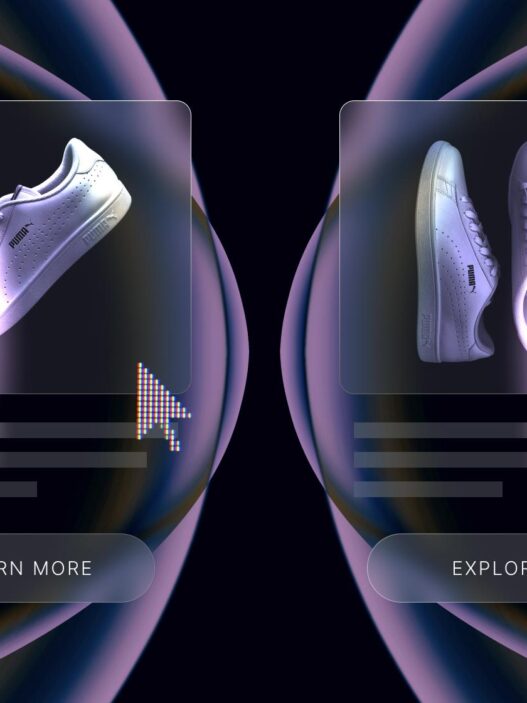Programmatic advertising has long been a game-changer in digital marketing, automating and optimizing the once-manual process of buying and placing ads. Fast forward to today, and artificial intelligence (AI) has become the driving force behind its evolution. From rule-based automation to AI-powered decision-making, the integration of AI is delivering smarter ad placements, enhanced targeting capabilities, and improved return on ad spend (ROAS).
For marketing professionals, ad tech specialists, and digital advertisers, understanding how AI enhances programmatic advertising is no longer optional; it’s essential for staying competitive in an increasingly complex ecosystem. This blog explores the foundations of programmatic advertising, the role of AI in transforming the landscape, and how businesses can harness these advancements to optimize campaigns for performance and efficiency.
The Foundations of Programmatic Advertising
Programmatic advertising uses technology to automate the buying and selling of digital ads across platforms through real-time bidding (RTB). Key players in the ecosystem include demand-side platforms (DSPs), which allow advertisers to purchase inventory, and supply-side platforms (SSPs), which enable publishers to sell ad space. While this automation replaced manual ad buying, traditional programmatic approaches have their limitations.
Traditional Limitations
- Manual Input: Ad campaigns historically relied heavily on manual data entry and human oversight.
- Static Rules: Optimizations were based on static rules, which lacked the capacity for real-time adaptation.
- Reliance on Historical Data: Decisions were guided by historical performance metrics, often failing to account for rapidly changing user behavior or market conditions.
Enter AI, which layers intelligence and adaptability onto the programmatic process. Unlike traditional methodologies, AI enables data to work harder and smarter.
How AI Enhances Programmatic Advertising
AI has redefined programmatic advertising by delivering unprecedented precision and agility. By leveraging machine learning algorithms and real-time data processing, AI empowers marketers to execute campaigns with significant efficiency and relevance across the customer lifecycle.
A. Smarter Ad Placements
AI tackles one of the fundamental challenges of programmatic advertising: delivering the right message to the right person at the right time.
- Real-Time Context Analysis: AI evaluates page content, user sentiment, and ad formats in real time to place ads where they’re most likely to resonate.
- Predictive Placement: Algorithms predict which placements have the highest likelihood of generating engagement based on historical patterns and behavioral insights.
- Dynamic Creative Optimization (DCO): AI continuously refines ad creative by analyzing performance data and delivering the most effective variations in real time.
For example, brands can use DCO to adjust ad visuals based on time of day, location, or customer preferences, ensuring maximum relevance and impact.
B. Intelligent Bidding Strategies
AI elevates bidding strategies by removing the guesswork and enabling adaptive decision-making.
- Bid Shading and Price Prediction: AI-powered systems estimate the optimal bid prices across different auction types to maximize impressions while minimizing spend.
- Budget Pacing: Advanced algorithms continuously monitor campaign spend, pacing budgets effectively to align with key performance goals.
- Auction Optimization: AI achieves better outcomes by tailoring bids for first-price, second-price, and private marketplace (PMP) auctions, improving cost-efficiency.
These capabilities allow marketers to allocate ad spend more effectively and reduce wasted investment.
C. Advanced Audience Targeting
AI revolutionizes audience targeting by moving beyond basic demographic data to tap into nuanced behavioral patterns.
- Lookalike Modeling: Machine learning identifies and targets audiences similar to a brand’s best-performing customers, helping scale campaigns with precision.
- Segmentation: Advanced algorithms segment audiences based on psychographics, habits, and interests, instead of just age or location.
- Intent Prediction: By analyzing real-time user signals and cross-device behavior, AI predicts purchase intent, making targeting more effective than ever before.
This level of targeting ensures advertisers can reach not only interested customers but those actively considering a purchase.
The Role of AI in Optimizing Creative Performance
While placement and targeting are critical, creative performance is increasingly vital for success in programmatic advertising. AI assists in developing and refining ad creative for greater engagement and conversion rates.
- Adaptive Creative Testing: AI conducts A/B and multivariate testing at scale, analyzing which versions of an ad perform best in different contexts.
- Personalized Messaging at Scale: Machine learning delivers dynamic text, video, and imagery tailored to individual users based on their preferences and behaviors.
- AI-Generated Content: Platforms powered by natural language processing (NLP) and vision AI create ad copy and visuals on demand, saving time while maintaining quality.
With AI, brands can create hyper-relevant ads that speak directly to individual customers, fostering deeper engagement and loyalty.
Benefits of AI in Programmatic Media Buying
The advantages of integrating AI into programmatic advertising are clear, with measurable impacts across efficiency, performance, and ROI.
- Improved Efficiency: Reduce manual effort and automate time-intensive processes like bidding, segmentation, and creative testing.
- Enhanced Agility: Optimize campaigns in-flight by analyzing real-time performance signals to adjust strategy instantly.
- Higher ROAS: Deliver personalized, predictive ads that resonate more deeply with audiences, resulting in stronger conversions.
By leveraging AI, brands gain a level of precision and scalability that traditional approaches simply cannot match.
Cautions and Considerations
While the benefits of AI are substantial, businesses must approach implementation strategically.
- Human Oversight Is Necessary: AI is not a set-it-and-forget-it solution. Continuous monitoring, testing, and adjustment are crucial to avoid inefficiencies or ethical pitfalls.
- Data Privacy and Transparency: Companies must ensure compliance with data privacy regulations, such as GDPR or CCPA, and provide transparency around how AI models are trained and used.
- Choosing the Right Platform: Not all AI tools are created equal. Evaluate platforms based on their features, scalability, and alignment with your specific business needs.
By addressing these challenges, organizations can unlock AI’s full potential while building trust with their audiences.
Harness AI for Programmatic Success
AI has become a non-negotiable tool for any business looking to excel in programmatic advertising. From smarter ad placements to advanced audience targeting and creative optimization, its impact is reshaping the digital advertising landscape.
To remain competitive, marketing professionals must evolve their strategies and invest in the right tools to integrate AI effectively. Start by auditing your current media stack and identifying opportunities to incorporate AI-powered solutions.
Take the first step—explore the possibilities of AI-enhanced ad buying and see how it can transform your campaigns into high-performing, data-driven successes. Contact us today.



















